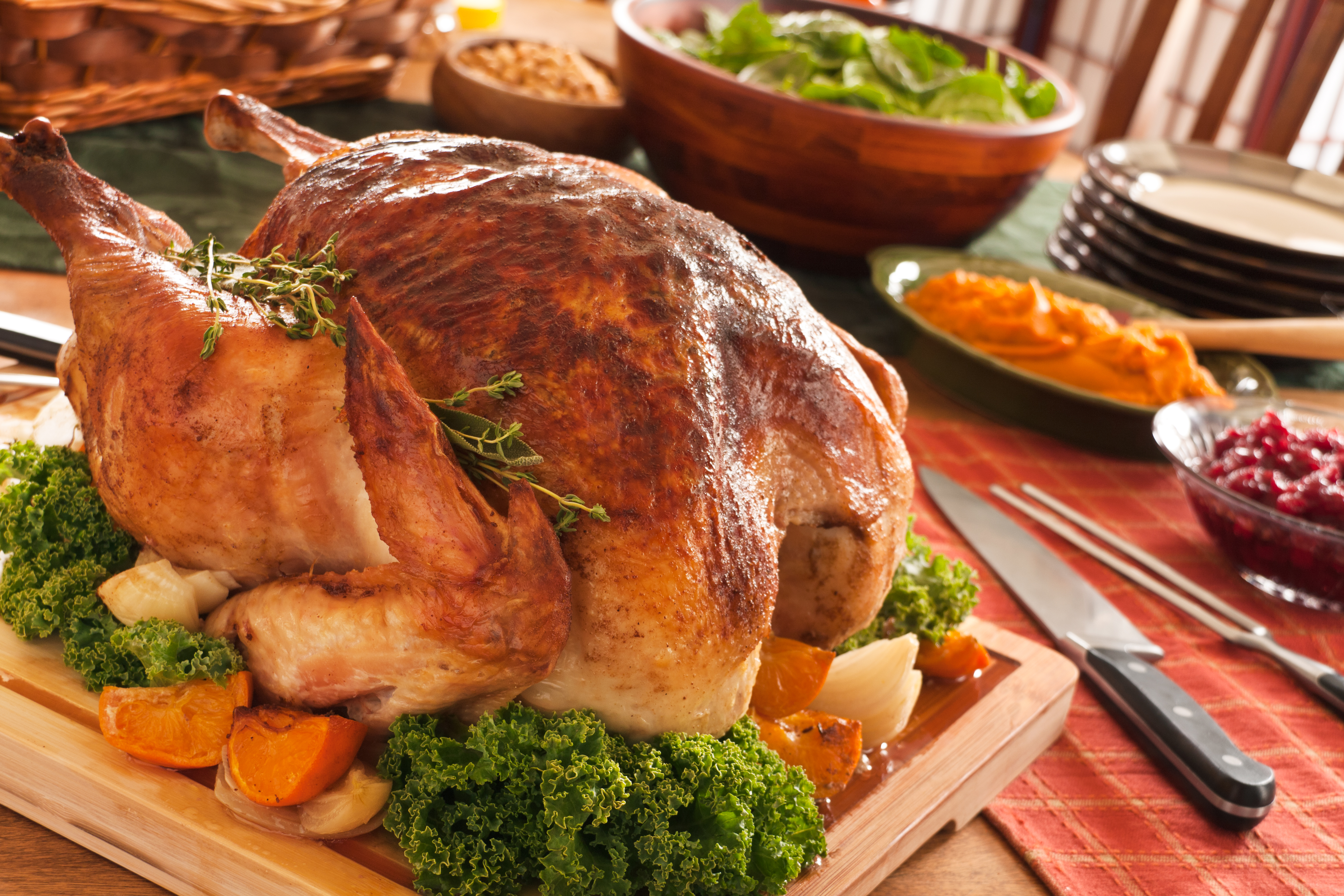The turkey as the center of the Thanksgiving meal is a tradition that many really enjoy…and others really dislike (but are afraid to swap out for fear of being boo’d out of the kitchen, or pelted with Brussels sprouts). Why do so many of us feel compelled to recreate the Norman Rockwell holiday meal? There are other birds we could serve—or even non-bird entrees that could impress our guests. Still, the bird is the word most of the time.

Why turkey?
The governor of Plymouth Colony in 1621, William Bradford, described that first autumnal feast as having “..besides waterfowl there was a great store of wild turkeys, of which they took many…” Experts all agree that turkey was part of that famous meal, but some think that the waterfowl (geese, ducks, even swans) were actually the centerpiece of the meal and the turkeys were sort of a filler fowl. Plimoth Plantation historians explain that the birds may have been stuffed, but most likely it was with vegetables and herbs, or nuts, not bread. In any case, the precedent was established. Wild turkey was great for rounding out the menu at the first Thanksgiving—it was plentiful (turkeys are born in spring and mature by late fall), easy to obtain and a turkey can feed a crowd—all factors that are still important today (even if most of us are not hunting our own birds).
Turkey becomes a fixture at the feast
In 1777, the Continental Congress was the first to declare a Thanksgiving holiday, and it appears that turkey was the star of the show. George Washington called for a repeat feast in 1789 for the new United States, and finally, the first official national Thanksgiving holiday was established in 1863, when president Abraham Lincoln proclaimed the last Thursday of November to be a “day of Thanksgiving and Praise.” Believe it or not, there are records of the menus at these early Thanksgiving feasts, and all of them indicate turkey was on the table (although to be fair, in most cases geese and chickens were as well).
Gobbling up Thanksgiving dinner
It’s pretty much a given that most of us will eat a larger-than-normal meal on this most food-focused holiday, and that’s okay. Sure, we could make wise choices to trim calories where it’s easy and won’t really be missed, but one thing you don’t need to swap out is the turkey. The turkey’s contribution to the overall caloric intake of the feast is pretty minimal actually—just under 200 calories for a 4-ounce portion (without skin). For that you get a nice, lean protein that is packed with B vitamins and delivers important minerals, too, such as selenium and iron. As for the rest of the meal, you can see how the other typical holiday foods weigh in using this chart.
Want more turkey talk?
For more info on all things turkey, including its role in American food history and culture, you might want to check out this book by Andrew Smith. And take a look at our Guiding Stars post on classic Thanksgiving recipes, and when the meal is done, here is a plan for dealing with the leftovers.